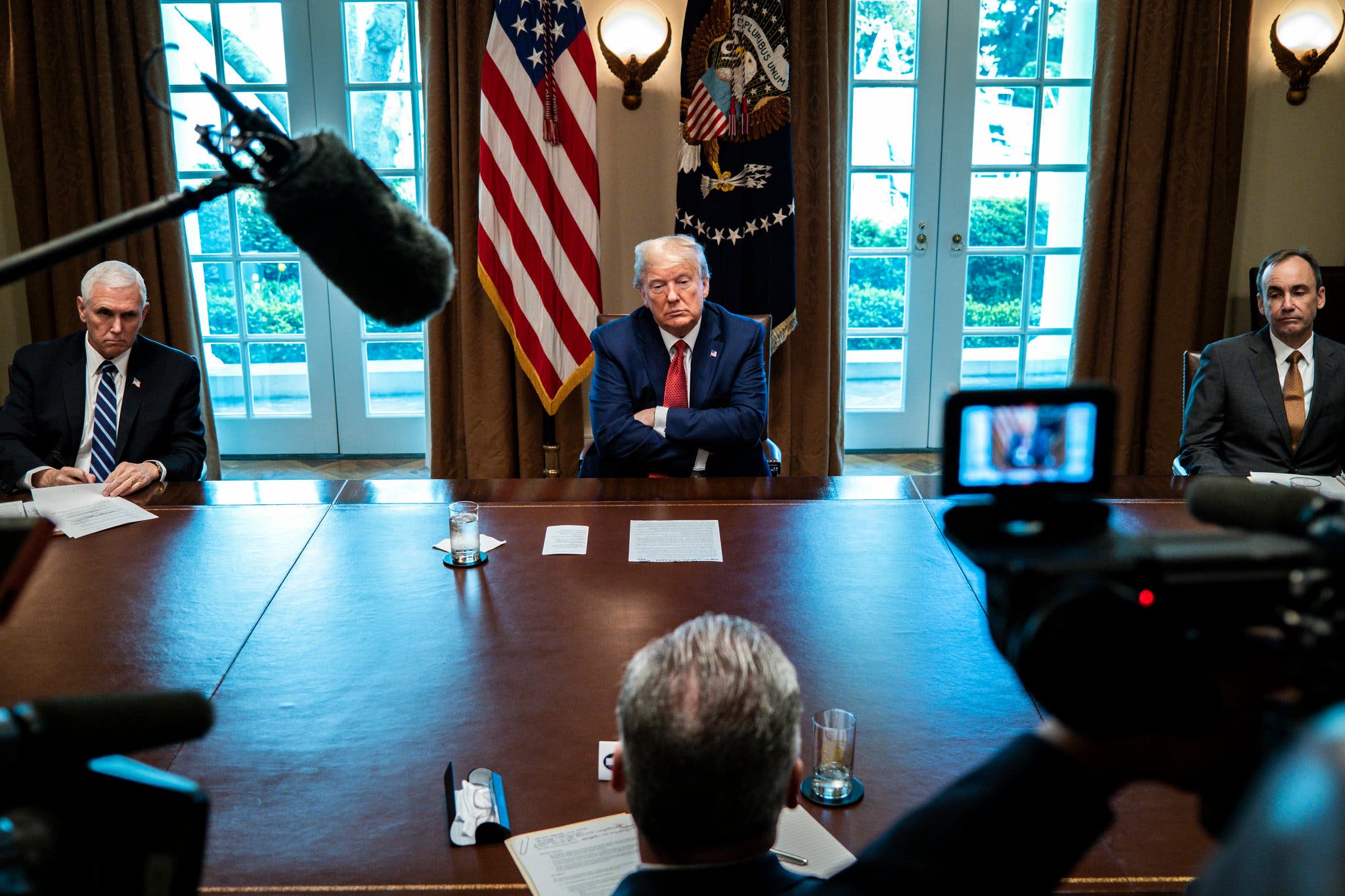Evaluating The Success Of Trump's Tariffs In Boosting US Manufacturing

Table of Contents
Intended Goals of the Trump Tariffs
The Trump administration implemented tariffs, primarily on steel, aluminum, and goods from China, with the stated goals of reshaping the US trade landscape and strengthening domestic manufacturing. The core economic theory underpinning these actions was protectionism – shielding American industries from foreign competition by making imported goods more expensive. The administration aimed to achieve the following:
- Protecting American jobs in the manufacturing sector: The argument was that tariffs would make domestic products more competitive, thus preserving and creating American manufacturing jobs.
- Reducing the US trade deficit: By decreasing imports and potentially increasing exports, the administration hoped to shrink the trade imbalance.
- Encouraging reshoring of manufacturing activities: Tariffs were intended to incentivize companies to move manufacturing operations back to the United States from overseas locations.
- Strengthening American competitiveness in global markets: The belief was that tariffs would level the playing field, allowing American manufacturers to better compete against foreign rivals.
Economic Data and Analysis Post-Tariff Implementation
Assessing the actual impact of Trump's tariffs on US manufacturing requires a careful examination of relevant economic data. While definitive conclusions are complex due to numerous interacting factors, analyzing key indicators provides some insights.
- Changes in US manufacturing output: While some sectors experienced short-term gains, overall manufacturing output growth remained relatively consistent with pre-tariff trends, according to data from the Bureau of Economic Analysis (BEA). The impact varied significantly across sectors.
- Changes in the US trade balance: The trade deficit with China did decrease initially after the implementation of tariffs, however, this was partially offset by increased trade deficits with other countries. The overall impact on the US trade balance was less significant than initially predicted.
- Impact on specific manufacturing sectors: The steel and aluminum industries initially saw some benefits, with increased domestic production. However, industries heavily reliant on imported materials faced increased costs, impacting their competitiveness and profitability. The automotive sector, for example, experienced significant challenges due to increased costs of imported parts.
- Graphical Representation: [Insert relevant graphs and charts showing changes in manufacturing output, trade balance, and employment in relevant sectors after the implementation of Trump's tariffs. Source the data from reputable sources like the BEA, Federal Reserve, and US Census Bureau.]
Unintended Consequences and Negative Impacts
While the intended goals of the Trump tariffs were to bolster US manufacturing, several unintended negative consequences emerged:
- Increased prices for consumers: Higher import costs led to increased prices for many consumer goods, impacting household budgets.
- Negative impact on businesses reliant on imported materials or goods: Many businesses faced higher input costs, forcing them to either absorb the increased expenses or raise prices, impacting their competitiveness.
- Retaliatory tariffs imposed by other countries: Several countries responded to the US tariffs with their own retaliatory measures, harming US exporters and further disrupting global trade flows.
- Disruption to global supply chains: The tariffs created uncertainty and disruption within global supply chains, leading to delays and increased costs for businesses. This was particularly significant for industries with complex, globally integrated production processes.
The Role of Automation and Other Factors
It's crucial to acknowledge that factors beyond tariffs significantly influenced US manufacturing trends during this period. Attributing changes solely to tariffs is an oversimplification. Key factors include:
- The ongoing automation of manufacturing processes: Automation continued to reshape the manufacturing landscape, impacting employment levels regardless of tariff policies.
- Shifts in global demand: Global economic conditions and changes in consumer demand played a role in shaping manufacturing output and employment.
- Other government policies impacting manufacturing: Other policies, such as tax reforms and infrastructure spending, also had an impact on the US manufacturing sector.
Isolating the precise impact of Trump's tariffs from these other concurrent factors presents a significant methodological challenge for economic analysis.
Long-Term Effects and Sustainability
The long-term sustainability of the changes brought about by the Trump tariffs remains uncertain. Several questions require further investigation:
- Are the observed changes in US manufacturing sustainable in the long term? The initial gains in certain sectors may not be sustainable without continued government support or fundamental shifts in global competitiveness.
- What adjustments will be necessary to ensure continued competitiveness? Maintaining competitiveness requires a multi-faceted approach that addresses issues beyond tariffs, including investment in research and development, workforce training, and infrastructure improvements.
- How have the tariffs affected the global trade landscape? The tariffs have contributed to increased trade tensions and uncertainty, potentially leading to a less integrated and more fragmented global economy.
Conclusion
Evaluating the success of Trump's tariffs in boosting US manufacturing is complex. While some sectors experienced short-term gains, the overall impact was less significant than initially hoped. The negative consequences, including increased consumer prices, retaliatory tariffs, and supply chain disruptions, were substantial. The difficulty in isolating the effects of tariffs from other significant economic factors further complicates the analysis. While some argue that the tariffs achieved certain objectives, the evidence suggests that the benefits were not substantial enough to outweigh the significant negative consequences. Ultimately, the long-term impact of Trump's tariffs on US manufacturing and global trade requires ongoing investigation and analysis.
Call to Action: Further research is needed to fully understand the long-term implications of Trump's tariffs on US manufacturing. Continue the conversation by sharing your thoughts on the effectiveness of these trade policies in boosting American industry and exploring alternative approaches to strengthening US manufacturing. Engage with the discussion surrounding the long-term impact of Trump tariffs and their role in shaping US trade policy and manufacturing competitiveness.

Featured Posts
-
 Rechtszaak Miley Cyrus Nieuwe Ontwikkelingen In De Plagiatsaanklacht Over Haar Hit Geinspireerd Door Bruno Mars
May 06, 2025
Rechtszaak Miley Cyrus Nieuwe Ontwikkelingen In De Plagiatsaanklacht Over Haar Hit Geinspireerd Door Bruno Mars
May 06, 2025 -
 Getting To Know Tracee Ellis Ross And Her Influential Family
May 06, 2025
Getting To Know Tracee Ellis Ross And Her Influential Family
May 06, 2025 -
 Zendayas Sister Alleges Abandonment During Cancer A Familys Broken Trust
May 06, 2025
Zendayas Sister Alleges Abandonment During Cancer A Familys Broken Trust
May 06, 2025 -
 Is This The End Gregg Popovichs Latest Development Raises Concerns
May 06, 2025
Is This The End Gregg Popovichs Latest Development Raises Concerns
May 06, 2025 -
 From Scatological Data To Engaging Podcast Ais Role In Document Digest
May 06, 2025
From Scatological Data To Engaging Podcast Ais Role In Document Digest
May 06, 2025
